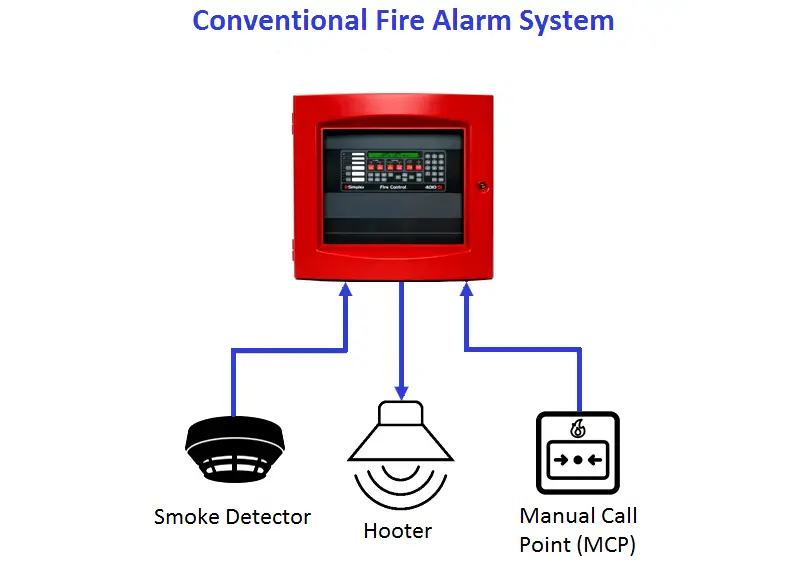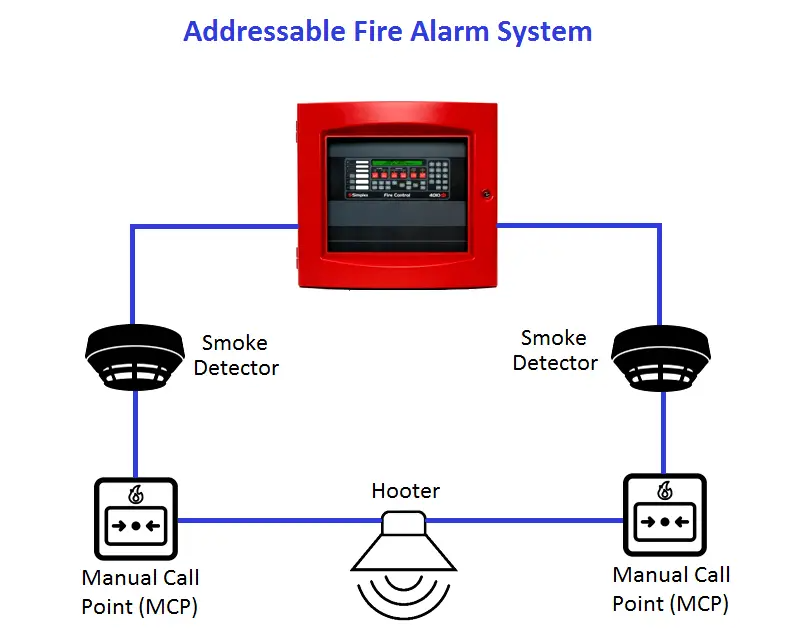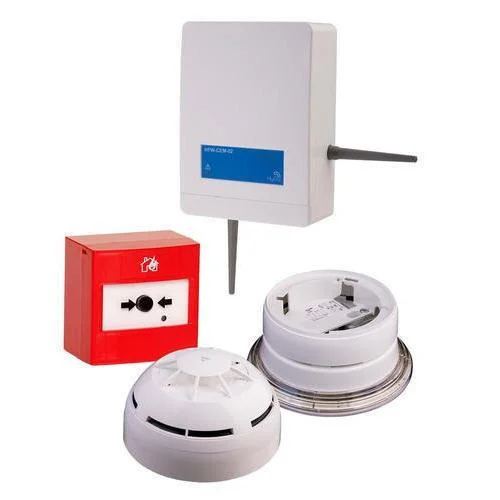Fire Alarm System
- Technogroups
- Fire Alarm System

-
+
Happy Clients
-
+
Associate Business Partners
-
years+
Business Experience
Conventional Fire Alarm Systems
Zone-Based Detection: is a fundamental feature of conventional fire alarm systems, where the building is divided into multiple zones, each monitored by a group of detectors. When an alarm is triggered, the control panel indicates which specific zone has activated, allowing responders to quickly identify the area of concern. This approach simplifies the monitoring process, making it easier to manage fire safety in smaller buildings.
Cost-Effective Solution: Conventional fire alarm systems are often considered a cost-effective solution for fire detection, particularly in smaller facilities. Their simpler design and installation requirements typically result in lower upfront costs compared to more advanced systems. This affordability makes them an attractive option for businesses and organizations looking to implement essential fire safety measures without significant financial investment.


Addressable Fire Alarm System
Precise Location Identification: Addressable fire alarm systems feature unique addresses assigned to each detector and device within the system. This allows the control panel to pinpoint the exact location of an activated device, providing detailed information about where the alarm originated. This precise location identification enhances response times and improves overall safety by enabling first responders to quickly assess and address the situation
Scalability and Flexibility:Addressable fire alarm systems are designed to be scalable and flexible, making them suitable for a wide range of applications, from small buildings to large, complex facilities.

Wireless Fire Alarm Systems
Wireless fire alarm systems utilize radio frequency technology to connect detectors, alarms, and control panels without the need for extensive wiring. This innovative approach offers a flexible and efficient solution for fire detection and alarm management, making it particularly suitable for various applications, including retrofitting existing buildings, temporary structures, and locations where traditional wiring is impractical.
Aesthetic Appeal: With no visible wiring, wireless fire alarm systems can maintain the aesthetic integrity of a building, making them a preferred choice for historical or design-sensitive structures.
Rapid Deployment: Wireless systems can be quickly deployed in emergency situations or temporary setups, providing immediate fire detection capabilities when needed most.
Ionization Fire Alarm System
Ionization fire alarm systems are a type of smoke detection technology that utilizes ionization chambers to identify the presence of smoke particles in the air. These systems are particularly effective at detecting fast-flaming fires, such as those caused by flammable liquids or paper. The ionization process involves a small amount of radioactive material that ionizes the air within the detection chamber, creating a current. When smoke enters the chamber, it disrupts this current, triggering the alarm.


Smart Fire Alarm System
Smart fire alarm systems represent the next generation of fire detection and safety technology, integrating advanced features and connectivity to enhance fire safety management. These systems utilize Internet of Things (IoT) technology, allowing for real-time monitoring, remote access, and automated alerts, making them a highly effective solution for both residential and commercial applications.
Business Of Growth
We businesss standard chunk of Ipsum used since is Agency & Star tup.
We Grow Business
We businesss standard chunk of Ipsum used since is Agency & Star tup.
Markting Solution
We businesss standard chunk of Ipsum used since is Agency & Star tup.


